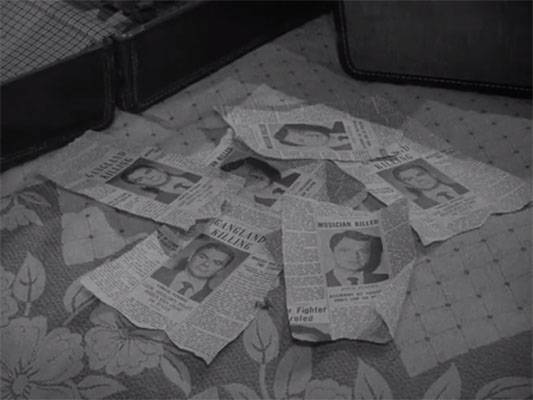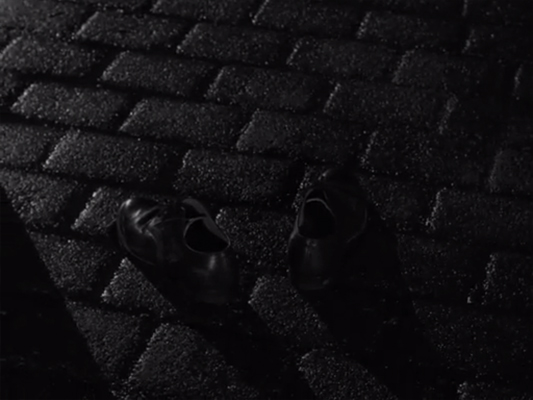5/30/13: “Humble Weekly Sale: Telltale Games.” $5 for eight games, two of which I played soon thereafter:
• The Walking Dead (5 episodes, 2012) [feels like a real TV show. In the world of computer games that’s a revolutionary achievement. It was widely hailed as a major milestone for the form — rightly — so I wasn’t going to miss it, even if that meant putting up with a lot of zombies and “desperate measures” apocalypsploitation. I enjoyed it even though it wasn’t for me]
• Puzzle Agent (2010) [a tasty, atmospheric cartoon, unfortunately made to house a series of flimsy unprofessional puzzles. But the art direction is clearly a labor of love, and it’s very short, so it managed to leave a good impression despite itself]
That left the following six games:
• Back to the Future: The Game (5 episodes, 2010—11): Telltale Games (San Rafael, CA) [12 hrs]
• Sam & Max: The Devil’s Playhouse (5 episodes, 2010): Telltale Games (San Rafael, CA) [15.5 hrs]
Back to the Future is certainly superficially impressive as a piece of licensing work — the Marty McFly impersonation deserves some kind of award — but underneath it’s still flat and dumb and gawky in all the ways adventure games usually are, which puts it into an embarrassing uncanny valley of quality. Neither offensive nor lovable.
Sam & Max: The Devil’s Playhouse has all the same limitations, but the material better suits the style. It’s Mad Magazine loopy mayhem, which is inherently more forgiving. The puzzle design is occasionally clever, and the experience benefits from the variety and unpredictability inherent to zaniness. Still dorky, though.
Adventure games have always had an unfortunate tendency to be creatively undercommitted, by which I mean that the player can sort of smell the world of the programmers the whole time. Telltale games prior to The Walking Dead seem to have tried to counter that by deliberately doubling down on “story” and “characters,” without addressing the real problem, which seems to me more one of confidence than craft. The result is that the games feel simultaneously undercommitted and overcommitted (as in “why are you acting like I care about these stupid paper-doll characters?”) — which is the way of dorkiness.
• Poker Night at the Inventory (2010): Telltale Games (San Rafael, CA) [4 hrs]
• Hector: Badge of Carnage (3 episodes, 2010–11): Straandlooper (Donaghadee, Northern Ireland) [9 hrs]
Poker Night at the Inventory isn’t really a full-fledged game, just an experiment at creating the illusion that you’re in a social space with four other characters. The illusion basically succeeds for about 20 minutes, and then dies as soon as dialogue begins to repeat. It was striking to observe myself feeling the intimidation and shame that I would feel at a real poker table. (“Dammit, even Strongbad is more worldly and competent than I am!”) I stuck with it for a couple more hours because I was interested in getting some poker experience, but eventually I came to see that playing against these spastic AIs hardly even counted as poker.
Hector: Badge of Carnage was distributed by Telltale but isn’t actually a Telltale game, and it has a very different personality from anything else here. It’s in the tradition of Leisure Suit Larry, willfully “seedy” and “naughty,” which means at heart actually innocent, but still not my kind of company. I will grant that the artwork is well done, a nice stylistic solution to the longstanding problem of doing 2D adventure games in high resolution. Might this be the only game I’ve ever played from Northern Ireland? Not sure.
• Puzzle Agent 2 (2011): Telltale Games (San Rafael, CA) [2.5 hrs]
• Wallace & Gromit’s Grand Adventures (4 episodes, 2009): Telltale Games (San Rafael, CA) [12 hrs]
Puzzle Agent 2 is a weak retread of the already watery Puzzle Agent (see above), reusing art and, inexcusably, the exact same story. I got the sense that it was put together as quickly and cheaply as possible, maybe by interns and meek new hires who didn’t dare introduce any new ideas or improve on any of the things that ought to have been improved. Graham Annable’s visual style is still compelling, but the game couldn’t be more superfluous.
Wallace & Gromit has all the same problems as Back to the Future and Sam & Max (and the Telltale Monkey Island game that I played a few months back), but the gentle domesticity of Wallace & Gromit’s world put me in a mindset more accepting of inanity. Playing this game is nicely congruent with doing some knitting, or waiting for a Rube Goldberg contraption to butter your toast, so even at its dullest — and it is frequently quite dull — it at least feels cohesive. As usual, brand-matching is Telltale’s real forte, and here it’s second to none; I had no doubt that I was puttering around in the company of the actual Wallace & Gromit. (Wallace’s voice is another top-class impersonation. If only Kermit the Frog had been so lucky.)
Meanwhile in the present day:
4/21/16: Stephen’s Sausage Roll, purchased new for $29.99 — by far my largest single expenditure on a video game in at least 7 years, probably much longer.
• Stephen’s Sausage Roll (2016): Increpare Games (= Stephen Lavelle) (London, England) [31.5 hrs]
• Jelly no Puzzle (2013): Qrostar (= “Tatsunami”) (Japan) [8.5 hrs]
This is the second commercial game by the designer of English Country Tune (which I mentioned in the previous game log) and, like that game, is an exquisite collection of Sokoban-variant puzzles. They are truly hard but never cruel; they generously communicate everything about their own solutions except for the new insight that each puzzle requires the player to reach. There is something stirring about the abstract, musical quality of this kind of communication; it’s an art of taste and feeling, as much as any other art. The best such puzzles are designed by people who have an ear for that musicality, and Stephen Lavelle is a gifted composer in this medium. He also has a good sense of the aesthetic value of entering that abstract thought-space, and the game knowingly cultivates an atmosphere that sensitively complements the puzzle-solver’s inner atmosphere.
Playing this (and The Witness a couple months back) has reminded me that it’s possible to feel really and truly engaged by every minute of a game. After one hasn’t been for a while, it’s easy to find one’s standards dropping involuntarily.
In the Steam discussion forum for the game, in response to the many people who showed up to say “$30 you gotta be kidding me,” the developer posted a list of what considered to be “amazing free puzzle games,” the first of which was Jelly no Puzzle. So after I was done with Stephen’s Sausage Roll, I decided to play that (free, for Windows or Android; sorry, Mac, though you can still play a version of the first six puzzles here).
Jelly no Puzzle (that’s Japanese for “Jelly Puzzle”) is similar to Stephen’s Sausage Roll in that it is concerned with abstract communication, but different in that its communication is almost always a deliberate misdirection (which is only occasionally the case in SSR). You “read” each puzzle until you understand what it requires, then figure out how to put that into action… and only then do you realize that the implied solution has in fact been subtly blocked. Then the real puzzle begins. The true solution is always something that goes somehow against the flow implied by the layout. The challenge here is to recognize all the ways the puzzle is influencing your thinking in order to be free of them, and engineer a stubborn solution that disregards the insinuations but actually gets the job done. This too is a mode of communication, sort of like a magician tricking an audience.
I will admit to looking at hints for the last two puzzles, after being stuck for nearly an hour each. The rest I proudly did by myself.

